Incipient autumn is an odd time to be talking about the language of flowers, so I must have been channeling seasonal changes in the southern hemisphere when my mind turned to floral communication this morning. Or, maybe it’s my reluctance to welcome cooler weather.
Unless we’re bombarded by the floral industry near Valentine’s Day, most Americans don’t think much about the nearly dead language of blossoms. It’s a different story in Japan. Today’s featured image is a red rose, an annual symbol of love and extravagance. But red is not the only color or variety of roses, or even the only symbol of love.
Among roses, we have primroses for young love, bridal roses for happy love, and the Rose of Sharon for those who are consumed by love.
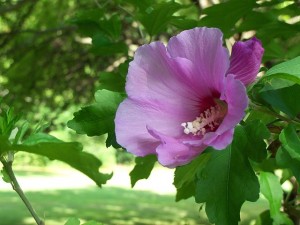
The bloom shown here doesn’t even belong to the rose family but is a hibiscus. Such are the vagaries of love.
Mary Wortley Montagu, wife of the British ambassador to Constantinople, was fascinated by coded messages sent by members of the sultan’s harem. When she returned to England in 1718, she took floral references with her. These were popularized by Queen Victoria and became a ubiquitous means of communication for young lovers.
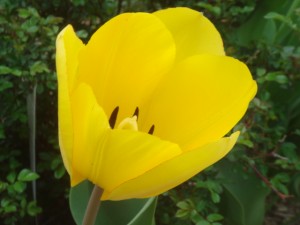
Yellow tulips, flowers born in the exotic countries of Turkey and Persia, were one way for a gentleman to declare his hopeless love to the woman of his affections. Like the flower, the unrequited lover was said to have a face on fire and a heart reduced to coal.
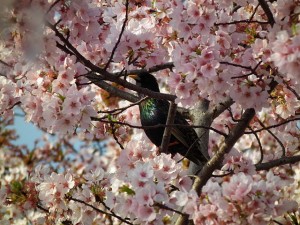
Hanakotoba, the language of flowers, continues to be celebrated in Japan where the cherry blossom is a national symbol. During the Age of Samurai, cherry blossoms depicted the warrior’s life. Samurai didn’t make plans for the future, but lived brilliantly and fell dramatically, just as cherry blossoms are magnificent in full bloom, before dropping single petals gracefully to the ground.
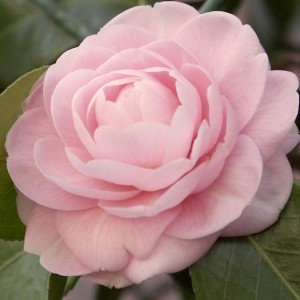
On a less dramatic note, a lover could send his or her beloved red camellias. If secretly in love, anonymous gardenias might be a better choice.
But, I sigh, what will bloom this winter?
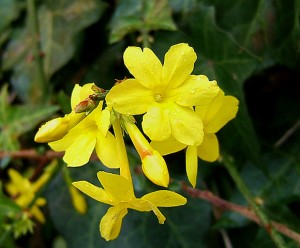
I’m in luck. Yellow winter jasmine carries attributes of grace and elegance.
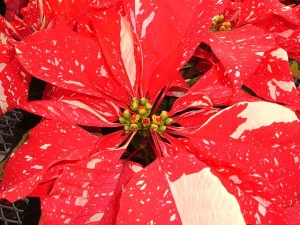
And poinsettias will appear in all the floral displays for the holiday season with their message to “be of good cheer.”
For a more complete dictionary on the language of flowers, may I suggest The Language of Flowers, Victorian Bazaar, and Hanokotoba.
What flowers do you prefer?
Acknowledgements:
Featured Image: Red Rose. US Public Domain. Wikimedia Commons.
History and Meaning of Tulips. ProFlowers. Here.
Language of Flowers. Here.
Victorian Bazaar. Here.
Dine Racoma. Hanakotoba. The Language Journal. Oct 18, 2012. Here.
John Spacey. Japanese Flower Meanings. Japan Talk. Feb 28, 2015. Here.

Sandra Wagner-Wright holds the doctoral degree in history and taught women’s and global history at the University of Hawai`i. Sandra travels for her research, most recently to Salem, Massachusetts, the setting of her new Salem Stories series. She also enjoys traveling for new experiences. Recent trips include Antarctica and a river cruise on the Rhine from Amsterdam to Basel.
Sandra particularly likes writing about strong women who make a difference. She lives in Hilo, Hawai`i with her family and writes a blog relating to history, travel, and the idiosyncrasies of life.


I too have been long fascinated with the language of flowers… I love anything that blooms…yes, even (some) weeds…
Beautiful post, Sandra!
So glad you enjoyed the post.